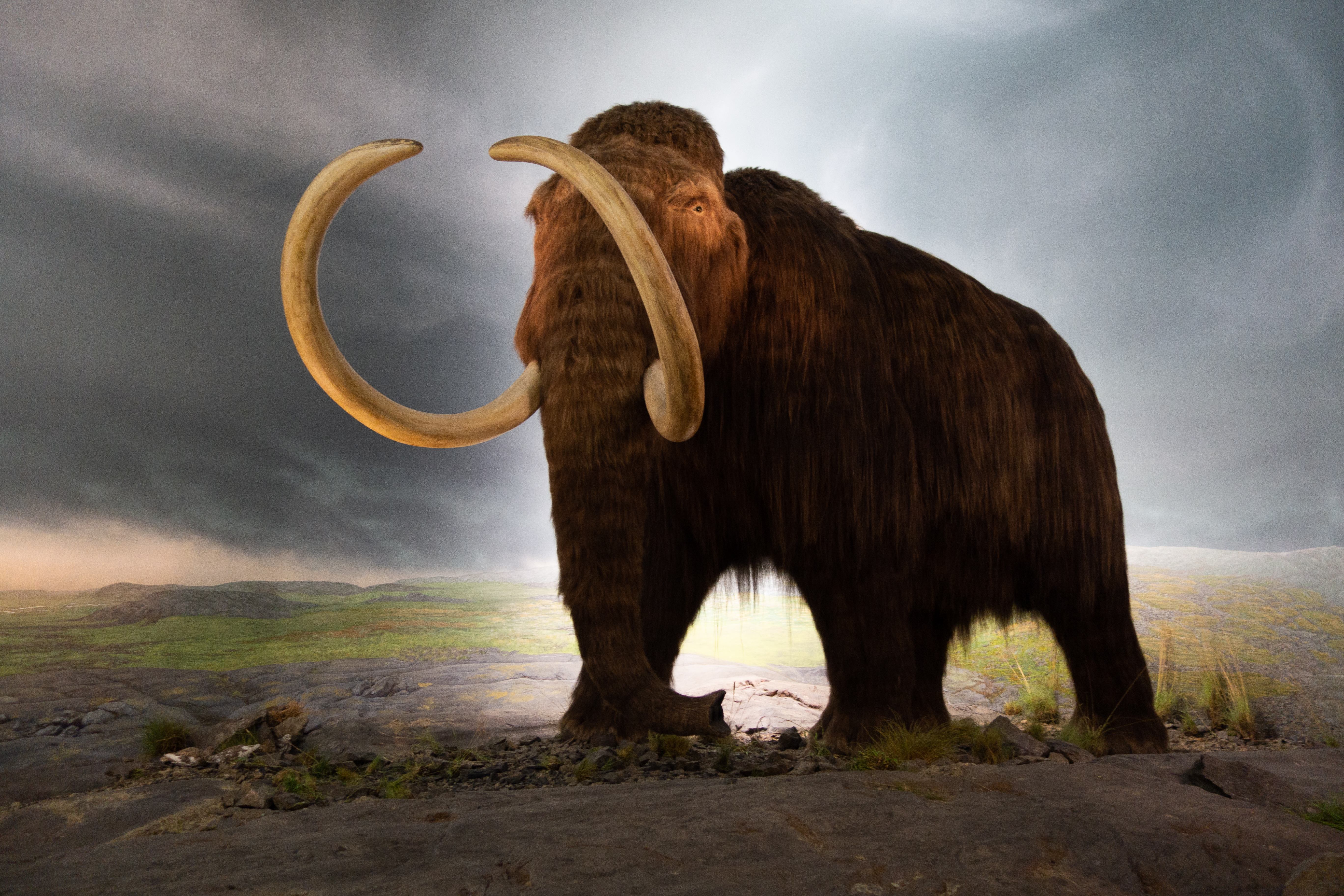Could dinosaurs ever come back? Could we bring back any extinct creature for that matter? As genetics and other forms of biological research advance, it is becoming an ever more real possibility, and for all the excitement about those possibilities, deextinction also brings with it a unique set of ethical and environmental considerations.
Could dinosaurs ever come back? Could we bring back any extinct creature for that matter? In June of 1993, moviegoers were first graced with the words: “Welcome to Jurassic Park”. Ever since Jurassic Park, the public has been fairly familiar with the concept of deextinction, that is bringing an extinct species, like dinosaurs or mammoths, to life again. However, it is a concept that has existed mostly in fiction. But, as genetics and other forms of biological research advance, it is becoming an ever more real possibility. And for all the excitement about those possibilities, deextinction also brings with it a unique set of ethical and environmental considerations. To quote Dr. Ian Malcom from Jurassic Park, “Your scientists were so preoccupied with whether or not they could, they didn’t stop to think if they should.”
Now, a lot of people in many a comment section will say something along the lines of “there are six movies about why that’s a bad idea”, referencing the Jurassic Park franchise. But beyond humor, comments like these add very little of anything constructive to the conversation of deextinction and may only serve to spread fear and misinformation based on fictional deextinction projects that failed for the purpose of having an exciting plot line. Real-life deextinction efforts are much more nuanced than a plot for an action movie, and to really understand the “should we”, we must first understand the science behind deextinction and the actual goals of the deextinction projects in question.
A Real Jurassic Park?
Of course, the first thing people tend to think of when they hear “deextinction” is dinosaurs and the possibility of creating a real-life Jurassic Park. Dinosaurs have long captivated us, and they are among the most popular of all prehistoric animals, if not the most popular outright. And with the success and iconic status of the Jurassic Park franchise, it makes sense that the dinosaurs would be floated as candidates for deextinction. But is that even possible? Could we bring dinosaurs back from extinction?
Well yes, but actually no. That is to say, one day we could engineer creatures that look similar to certain non-avian dinosaurs, but we cannot actually bring back the extinct dinosaur species themselves. In the Jurassic Park franchise, preserved DNA in blood contained in mosquitos fossilized in amber was used to clone dinosaurs, with missing pieces of DNA being filled in with the DNA of living creatures; birds, reptiles, and most famously in the first movie, frogs. However, in reality, cloning a dinosaur is impossible. DNA is an unstable molecule and has a half-life of only about 520 years under normal conditions, meaning after 520 years, roughly half of the remaining DNA in a sample has decayed. The shelf-life of DNA can be extended much further by altering conditions, specifically by freezing it, but this still has its limits. The oldest DNA ever recovered was from a 2 million year old mastodon frozen in the permafrost of Greenland (https://www.nature.com/articles/d41586-022-04376-y). The most recent non-avian dinosaurs lived 66 million years ago, 64 million years before that frozen mastodon. Not only is it simply too long a time to expect any viable DNA to still be preserved, but the Late Cretaceous was much warmer than our modern climate and there was no permanent ice or permafrost to preserve a dinosaur even if DNA could last 66 million years while frozen.
However, dinosaur DNA does survive today, albeit in a modified state, in birds. Birds are the only surviving lineage of dinosaurs, and their DNA maintains many genes from their famous theropod ancestors. Many of these genes still code for traditionally “dinosaurian” traits, they have just been modified or simply “turned off” in modern birds. Interestingly, many of these genes remain “turned on” during embryonic development. For instance, while still in their eggs, birds begin to develop the beginnings of tails and teeth, however, at a certain point in development, these genes are switched “off”, and the bird develops a pygostyle instead of a long tail, and a beak instead of a mouth full of teeth. In this way, embryonic development sort of replays the evolutionary “tape” in miniature. So what if we could play the tape backwards, essentially hitting “rewind” on evolution by tinkering with a bird’s development?
This is a question at least a couple scientists have asked and decided to do something about. Paleontologist Jack Horner, former curator of the Museum of the Rockies and scientific advisor for the Jurassic Park films, and paleontologist and developmental evolutionary biologist Dr. Hans Larsson, had the idea to reverse-engineer a dinosaur from a bird back in the early 2000s and as detailed in Horner’s book How to Build A Dinosaur, and the Discovery Channel documentary Dinosaurs: Return to Life?, their efforts were met with some early success, tweaking the development of chicken embryos to be more dinosaur-like. Fascinatingly, when traits like a tail or teeth were maintained for longer through development, the surrounding body parts developed differently to accommodate the structures, suggesting real possibility in using these methods to recreate a living, breathing, functioning, non-avian dinosaur from a bird. The goal of Horner and Larsson’s “Build A Dinosaur Project” is to use a bird to create an animal with a long tail, teeth, and clawed hands, among other traits, something that looks like the non-avian dinosaurs of old. But despite early successes, understanding the genetics to make these changes permanent is tricky and the research, like many things in paleontology, has been slow-going. A breakthrough was had in 2015 when researchers published on a molecular mechanism for the origin of the bird beak and palate (https://onlinelibrary.wiley.com/doi/abs/10.1111/evo.12684). But there are still many hurdles to go, not the least of which, according to Horner, is the tail. Updates on the project have been sparse in the last decade, and it is unclear if we’ll see a dino-chicken anytime soon. Much of it will come down to time, and perhaps even more importantly, funding. But as genetic, developmental, and paleontological research progress, it does seem likely that we’ll see some sort of retro-engineered dinosaur at some point, eventually.
However, can this really be considered deextinction? In the broad sense, yes, but in the strict sense, no. It would certainly be the resurrection of an extinct phenotype, something that looks like a non-avian dinosaur, but strictly speaking, it would not be an extinct species coming back, but rather a new species that resembles old ones, a callback, rather than a comeback. The creature might resemble a small Velociraptor, but there’s no way for it to be exactly the same, and genetically and phylogenetically it would be closer related to birds, being itself a modified bird. Additionally, this process would theoretically only limit us to creating bird-like theropods since we only have birds to work with. So we could get something similar to a Velociraptor, Troodon, or an Ornithomimus, but we’re unlikely to get something like a Triceratops or a Brachiosaurus. With selective breeding and extensive genetic modification, perhaps someday even creatures resembling those could be possible, but we are a very, very long way from anything like that. In the near future, the closest thing we are likely to get to Jurassic Park is a small raptor-like dino-chicken, or perhaps a larger variety derived some something like an emu (which already looks prehistoric, let’s be honest).
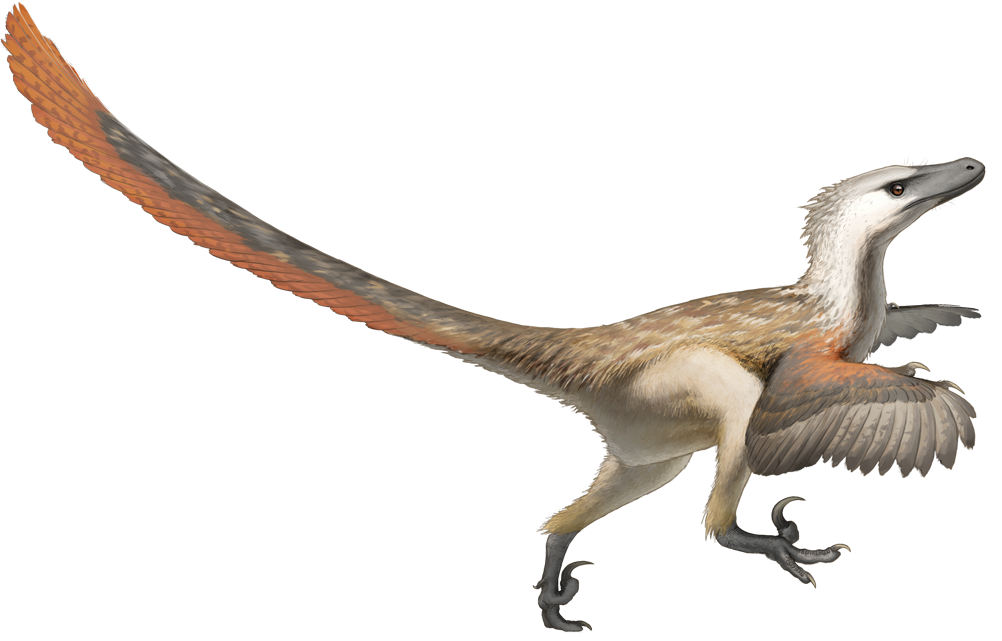
Now with that basic understanding of the science of building a dinosaur, we can ask the question, “should we”? This is not a simple question with a simple answer. But many ethical questions surrounding it do have answers with precedent in our everyday lives. One of the primary concerns is the health and comfort of the animals experimented on and created, and the ethics of experimenting on or killing an animal in the first place. In the case of “The Build a Dinosaur Project”, objectors based on this line of thinking can take their complaints to the nearest KFC. Humans regularly keep and consume chickens and their eggs, as well as many other kinds of birds. Even the likes of ostriches and emus have their place on many farms and can be, and are, eaten. It makes little sense to wring one’s hands over the ethics of experimenting with an animal that was bred for human consumption, and which is so widespread that it can be purchased ready to eat for about $5 from the nearest grocery store. Some might argue that while killing them for food is fine, it is inhumane to experiment on them because the resulting animal could be deformed, dysfunctional, and/or in pain. The simple rebuttal to that, which Jack Horner said himself in his book, is that the goal is not to create a deformed and miserable creature, but to create a healthy and fully functional dino-chicken. If an experiment fails or is terminated at certain point, the embryo would be dead, but then again, that’s no different than a chicken at any fast-food joint or grocery store, except that this chicken died for science. As a society, the mass breeding and killing of chickens is accepted with little to no question, so there based on societal precedent, there probably shouldn’t be a big problem with using them in dinosaur developmental research.
Perhaps a more valid concern is environmental. Where would a dino-chicken, or any new dinosaur-like creature, live? Afterall, the ecosystems which the dinosaurs dominated are long gone, and we cannot just release non-native species into the wild. Any dino-birds created would have to live exclusively in captivity. This may seem cruel, but then consider that there are many animals which exist almost entirely in captivity. Domestic dogs, cats, cattle, sheep, etc. are all animals that humans created through selective breeding, whose “natural” habitat is human civilization. A retro-engineered dino-bird would essentially have to be treated like other artificially bred animals and join the ranks of many domestic varieties that fill our farms, zoos, and households (or only exist in verified scientific facilities). However, many of these domestic animals are in fact highly invasive species which do great harm to the ecosystems they escape into. And adding another problem species in the form of a Velociraptor-look-alike would be far from ideal.
Other questions to consider on the topic of dinosaur deextinction include: Are they patented? Who is allowed to own them? Can owners breed new varieties? Should any organism be patented in the first place (also relevant to certain GMOs in the food industry)? Would a new species warrant protection by the Endangered Species Act? What happens if they do escape and establish wild populations? These are questions which don’t have ready answers, and there is bound to be disagreement in opinion depending on who you ask. These aren’t necessarily prohibitory, but if someone ever does create a real life dino-bird, these are important questions to keep in mind.
Beyond ethical concerns, it should be noted that there are also potential benefits to the Build a Dinosaur Project, some of which may be a bit surprising. Perhaps the most obvious benefits would be expanding our understanding of the complex connections between genetics and developmental biology, helping us to learn more about how genes are expressed. It could also, and already has, shed valuable light on just how birds evolved, and on the changes involved in that evolutionary process on a genetic and developmental basis. Less obviously, but potentially even more directly valuable to us, it could also lead to better medical treatments for humans. All vertebrate life forms share much of their genome with each other. Many of the genes that control the development of, say, the spinal collum, in birds, are the same or similar in humans. Unlocking the genetic and developmental mechanisms that could cause a dinosaur-like tail to develop in a chicken, could also lead to new insights into how to treat spinal deformities and injuries in humans.
At the end of the day, there is no real right or wrong answer as to the “should we” for dinosaur deextinction, so long as we don’t make the mistakes of the movies (we don’t want anyone getting eaten at least). It is a complex issue with both great potential and potential concerns. But in any case, a real Jurassic Park, even one populated by mere dino-chickens, is likely still a way off. But there are other deextinction projects that might yield results much sooner.
For more information on dinosaur deextinction, see How to Build a Dinosaur by Jack Horner, or the following articles:
https://www.livescience.com/17642-chickenosaurus-jack-horner-create-dinosaur.html
https://www.livescience.com/50886-scientific-progress-dino-chicken.html
The Miracle of Cloning
While dinosaurs are far too ancient to be candidates for cloning, not all extinct animals lived so long ago. Some prehistoric animals, like mammoths and mastodons, have yielded significant genetic samples, such that cloning, or a related process, could be used to resurrect them. Others, such as the dodo, passenger pigeon, and thylacine, were modern animals driven to extinction by humans only recently. And it is these, much more so than dinosaurs, which offer the most tantalizing opportunity to bring back extinct life forms, and which actually have strong environmental arguments in favor of doing so.
In short, cloning is the process by which a genetically identical organism is produced from a parent organism. Many, if not most, life forms reproduce this way naturally. However, it is rare in vertebrate life forms. But humans have developed ways to artificially clone animals which wouldn’t ordinarily produce clones in nature. You can learn more about the specifics of that process here: https://science.howstuffworks.com/life/genetic/cloning.htm.
Cloning has actually been a thing for several decades. The first animal ever cloned was a tadpole all the way back in the 1950s! More famously, the first mammal cloned from an adult somatic cell was Dolly the Sheep in 1996. Since then, many other animals have been cloned. But perhaps the most relevant to the topic of deextinction is the Pyrenean ibex. These goat-like animals native to the Pyrenees mountains of Spain and France went extinct in 2000. But in 2003, researchers were able to produce a clone, making the Pyrenean ibex the first animal to come back from extinction (https://www.sciencedirect.com/science/article/pii/S0093691X08007784?via%3Dihub). Sadly, the baby died from a lung defect after just several minutes, meaning the Pyrenean ibex is also the first animal to have gone extinct twice. Despite this setback, frozen cells, taken from the last living Pyrenean ibex before their initial extinction, still exist, and researchers still hope to successfully bring back the subspecies in the future.
But cloning is only half of the battle. Genetic material from a single female will not be enough to bring back a healthy breeding population. One solution is to breed the clones with males of a closely related subspecies. This may work but would also mean that the resulting Pyrenean ibexes would not be the pure subspecies from before. An alternative is to make many clones from many samples from different individuals. However, this means a lot more work and may also be limited by available samples. After all, they are extinct, so there is very limited viable Pyrenean ibex DNA left in the world. This is a concern for any project cloning an extinct animal.
The efforts to clone the Pyrenean ibex epitomize a major thought process behind many deextinction efforts, which is to restore damaged ecosystems by the returning of species lost due to human activity. Essentially, the goal is to use deextinction to right some of the ecological wrongs done by humanity. A noble goal, akin to conservation, and one that may potentially help preserve and restore struggling ecosystems, which benefits both humanity and the planet.
Other recently extinct species that could make a comeback, courtesy of a company called Colossal Biosciences, include the dodo of Mauritius (an island in the Indian Ocean) and the thylacine (also called the Tasmanian tiger or Tasmanian wolf) of Australia. However, if you’ve heard of Colossal Biosciences or its founder Dr. George Church, then you’re probably aware of their most ambitious and charismatic deextinction project: the woolly mammoth.

A Mammoth Undertaking
The woolly mammoths are among the most famous prehistoric animals that aren’t dinosaurs, but unlike dinosaurs and many others, they lived recently enough (until about 10,000 years ago) that frozen specimens preserved in the arctic do in fact yield DNA. This combination of charisma and possibility makes them an ideal poster child for deextinction. And the genetics and conservation company Colossal Biosciences says they might have one by 2027! Source: https://colossal.com/the-woolly-mammoth-will-be-back-in-6-years/. Time will soon tell if this optimistic goal will be met.
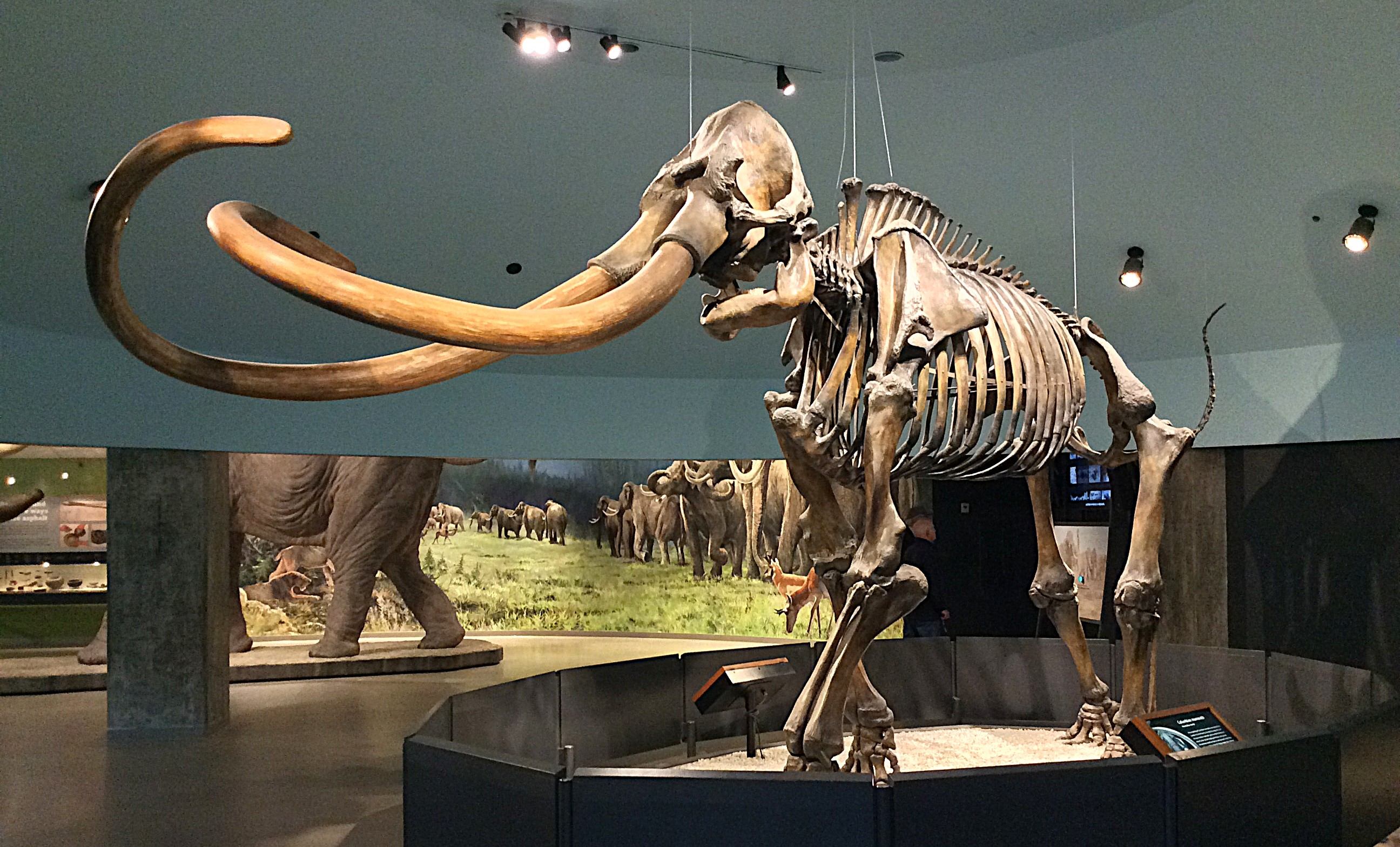
However, the process to resurrect the woolly mammoth will be more complicated than more recent animals like the thylacine or Pyrenean ibex. Even DNA from frozen specimens degrades quickly, and so far scientists, despite having sequenced the mammoth genome, have been unable to acquire DNA or cells intact enough to use in regular cloning. So Colossal Biosciences has come up with an alternative, which is to start with a complete Asian elephant genome (the closest living relatives of mammoths with a genome 99.6% similar to their extinct cousins), identify the genes in the mammoth genome that control for mammoth specific traits, including an insulating subcutaneous fat layer, small ears, thick fur, and other adaptations for arctic living, and using CRISPR technology to graft those genes into an elephant genome, and implant the resulting pseudo-mammoth embryo into a healthy elephant surrogate so it can gestate and then be born and raised by elephants. That last part is just as important as the genetic stuff because elephants are highly social animals that require a mother and herd to teach them the survival skills necessary for them to be fully functional elephants.
Recently in early 2025, Colossal announced a breakthrough in mammoth deextinction. They have successfully engineered test organisms which bear the mammoths’ long, thick, wavy woolly coat. The test organisms for now: mice. Yes, there are “woolly mice” (a woolly mammouse, if you will) now. And they are actually adorable. But beyond their fluffy cuteness, it is a big step in the mammoth re-creation process, demonstrating the effectiveness of their methods in engineering specific mammoth traits in another organism. And it worked. This year it was mice. But perhaps soon we’ll have an actual mammoth! Follow this link for Colossal’s news article about the woolly mice: https://colossal.com/company-creates-woolly-mouse-in-quest-to-bring-back-mammoths-turns-out-its-really-cute/
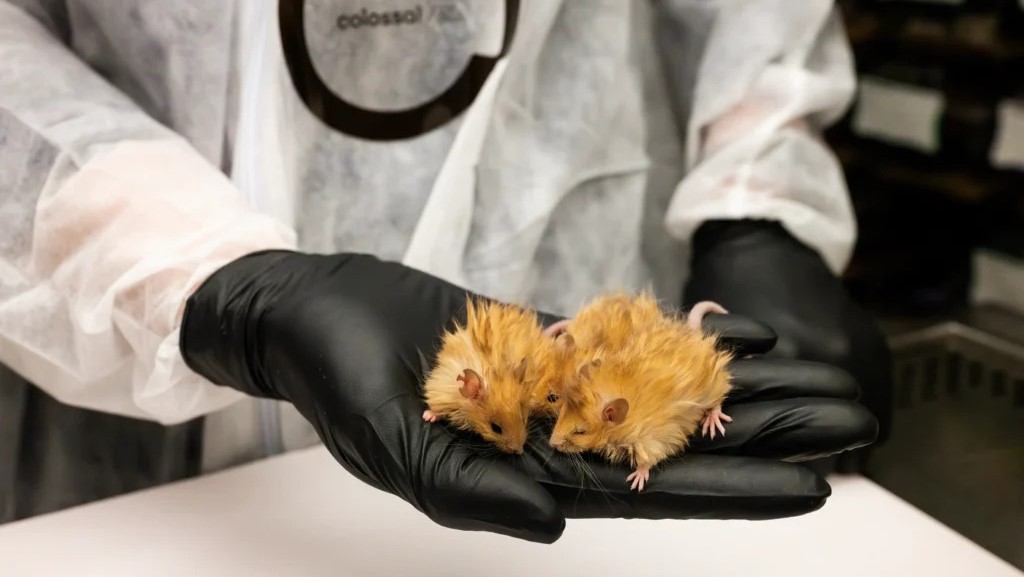
Now we must address the “elephant in the room”: why bring back mammoths, or a mammoth-like elephant? Well, for one, like more recently extinct animals, humans are likely mostly to blame for the extinction of the mammoths. So bringing back the mammoths, even in a sort of hybrid form, would help to right that wrong.
But more importantly, mammoths were major ecosystem engineers which maintained a highly productive habitat in the arctic called the mammoth steppe. This was a cold grassland which supported numerous other species, and it was maintained by movement and grazing by the woolly mammoth herds. After the extinction of the woolly mammoth, the arctic steppes turned into scrub and tundra which sustain much less life than the steppe did. And thanks to the abundant grass of the steppe which insulated the ground in the warmer parts of the year, and thanks to mammoths breaking up the snowpack and thus removing insulation during the colder parts of the year, the permafrost beneath the mammoth steppe was far more stable than the permafrost of the modern tundra, which has been melting as global temperatures increase. What’s more, the permafrost stores large quantities of greenhouse gases, so as it melts, more greenhouse gases are emitted which leads to yet more warming, a vicious cycle. But experiments at “Pleistocene Park” in Siberia, show that by mimicking the activity of woolly mammoths (using a decommissioned Soviet-era tank!), the tundra actually reverted to steppe land capable of supporting much more wildlife, and the permafrost in the area under the new steppe actually stabilized. Thus, bringing mammoths back, would not only do right by the mammoths, but also revitalize the arctic ecosystem and potentially help fight climate change!
Now the process of returning mammoth herds to the arctic will not be a quick one. Elephants take a long time to grow up, and they require a lot of socializing with other elephants. Engineered mammoths would have to be raised by elephant herds and slowly introduced in groups to the arctic in a slow and carefully controlled program to make sure they adjust well. But if successful, they would be important environmental allies in the quest to fight against extinctions, habitat destruction, and climate change, and a bit of prehistoric wonder would once again be present in the northern reaches of Planet Earth, last seen by our ancestors thousands of years ago.
Of course there are still some ethical concerns. The biggest one being from a conservation standpoint. Some complain that where elephants are already endangered, we shouldn’t be wasting resources, and female elephants (for surrogate mothers for the mammoth calves), on an extinct species. However, in terms of money, this is not a zero-sum game. Those who support conservation efforts for endangered species will likely still continue to do so. The addition of one more species does not inherently rob the others. And as far as concerns for elephant conservation, the mammoth project actually hopes to aid in their conservation as well by discovering new insights into elephant biology as well as the biology of arctic organisms (also threatened by climate change and human activity), and Colossal Biosciences is itself a large supporter of conservation and especially elephant conservation. The idea is that by bringing back the mammoths, it’s a win for elephants, arctic wildlife, and the fight against climate change. Colossal’s official goals for the project are as follows:
- Increase resilience of habitats to climate change and environmental upheaval
- Develop new tools & techniques that will contribute to the global effort to save modern elephants from extinction
- Understand the genetic basis traits of cold adaptation in animals
- Drive advancements in multiplex genome editing
- Demonstrate that it’s possible to bring back an extinct megafauna species
You can learn more about Colossal Biosciences and their deextinction projects by visiting their website.
Homepage: https://colossal.com/
Conservation Efforts: https://colossal.com/conservation/
Woolly Mammoth Project: https://colossal.com/mammoth/
Other Species: https://colossal.com/species/
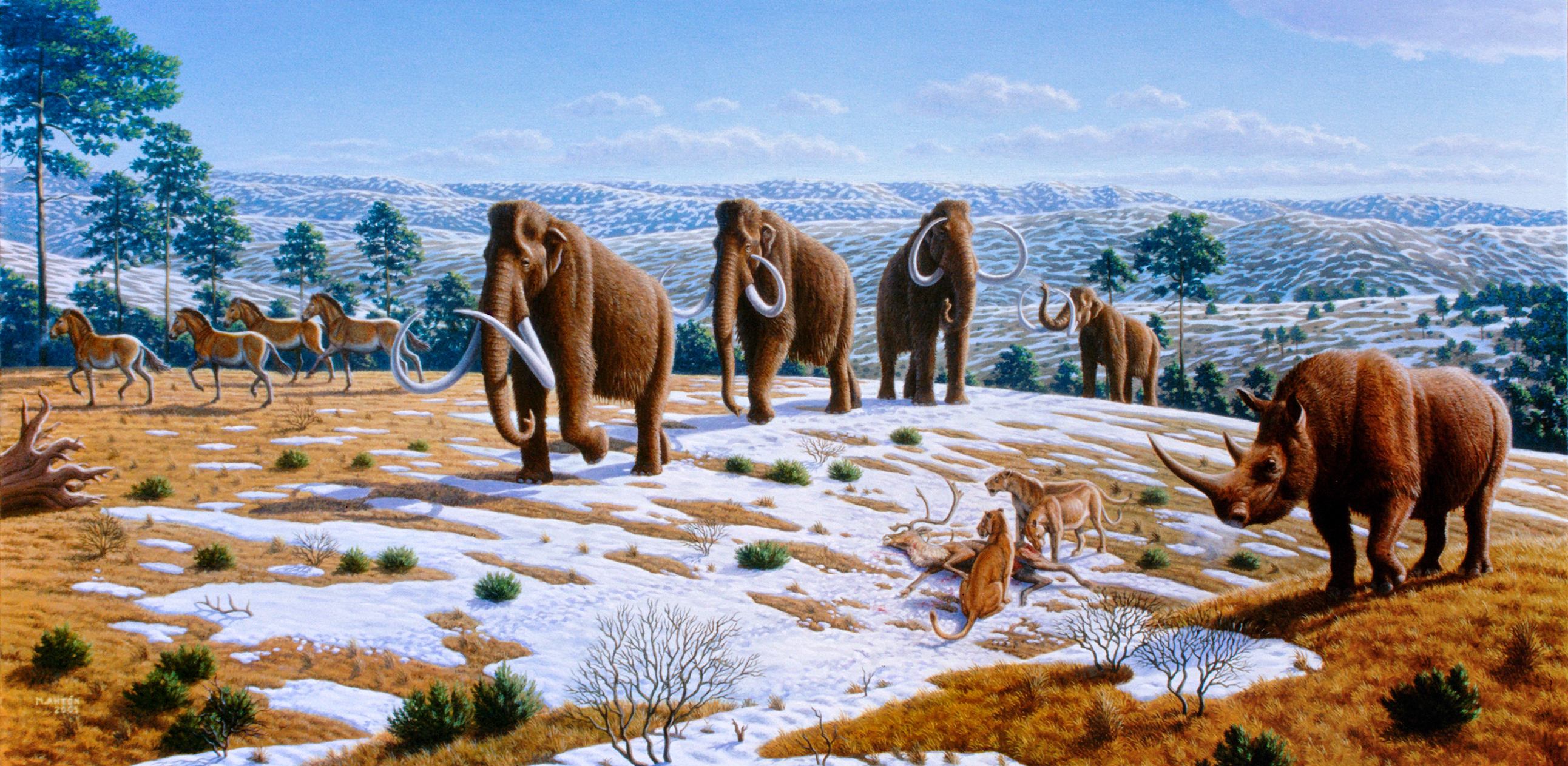
Should We?
These are just a few examples of deextinction that could take place in the near(ish) future. But whether it’s a dino-chicken or a woolly mammoth, the question is always “should we?”. The answers aren’t always simple, but there are some good arguments to be made in favor of yes, and many of the more specific concerns with deextinction may be easily dealt with by simply being smart about it. Jurassic Park didn’t give us six movies about why we shouldn’t bring back extinct species, it gave us six movies about how not to build a dinosaur park. It is a work of fiction with a plot dependent on the characters making poor decisions. In the real world, the goal of deextinction efforts is not to quickly assemble a poorly executed theme park, but to make real discoveries and advances in evolution, genetics, and conservation. Ultimately, you dear reader, will have to decide if deextinction is a good idea, and which examples might be more worthy than others. But as in all things scientific, be sure to do your research before forming a strong opinion. The sources referenced throughout this blog ought to be a good start!
Regardless of how those questions are answered in the future, it is nevertheless exhilarating to think that one day we might actually see a mammoth or a raptor-like dinosaur alive in the flesh. We live in an exciting world where scientific discoveries are made every day. Perhaps one day, those discoveries will lead to something like Jurassic Park. Only time will tell if extinction is forever or if we can successfully bring species back from extinction. But for at least a few species, that time may be sooner than you think!
